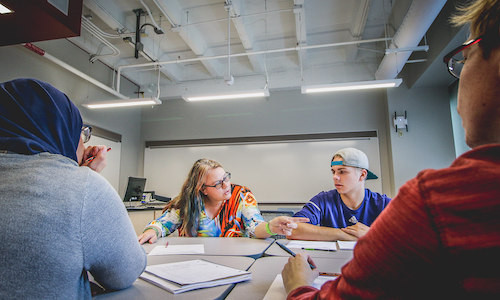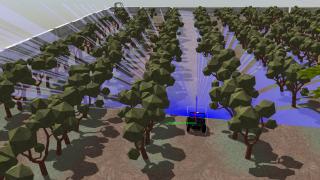
When Chemistry Associate Professor Sheila Smith leads her courses, she chooses lessons that will allow her students to visually and actively learn.
When teaching about the periodic trends, instead of simply having the students list atoms, each student group is given element cards and works together to move them into the right order. And when it comes to educating about orbitals, Smith has her students draw pictures of where the electrons are located after a short lecture.
“When students are engaged, it reaches a different part of the brain and makes them think about what things mean instead of memorizing words,” she said. “It’s important not only to lecture, but to also have your students put what you just shared with them into practice.”
Smith is part of the 10-person leadership team of a national online network in chemistry—the Interactive Online Network of Inorganic Chemists (IONiC), dedicated to helping others incorporate active learning into their classrooms.
The team recently received a $1.1M grant from the National Science Foundation (NSF) to study the virtual network’s impact on teaching and learning.
“We are a large community of excited and participatory members, and we think we can really make a difference in getting science faculty to adopt active learning practices,” said Smith, who is a co-principal investigator on the grant.
Part of the IONiC network, which is open to all educators, is a website titled VIPEr: the Virtual Inorganic Pedagogical Electronic Resource. The searchable site includes a wide variety of peer-submitted and peer-reviewed active learning lessons for inorganic chemistry—a subject that has applications in every aspect of the chemistry field, from medications to material science to agriculture.
“Educators are working together in a way that is helpful for each other and our students. Look to see if there is an activity that works for your class,” Smith said. “I’ve written a lot of material on the site. And I’ve incorporated materials from the site into my classroom too.”
As part of the NSF grant, the IONiC leadership team is facilitating professional development workshops across the country to share active learning techniques and help develop new syllabi incorporating active learning classroom materials. Smith said—with College of Arts, Sciences, and Letters Dean Marty Hershock’s support—UM-Dearborn is a workshop site. The first of several on-campus workshops will take place in summer 2018.
In addition to the workshops, the grant is funding a study that is to look for evidence of change in the patterns and behaviors of teachers, and therefore in the quality of learning of students.
“From anecdotal evidence, we’ve seen success from these teaching methods. But we want data,” she said.
Smith said she’s proud that her university supports IONiC and its mission in helping faculty become more effective educators.
“Because of this work, UM-Dearborn is, and will remain, at the forefront of advancement in the teaching of inorganic chemistry.”






